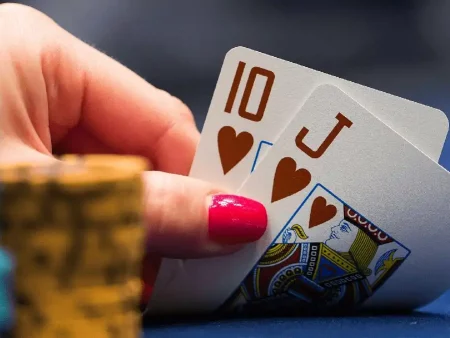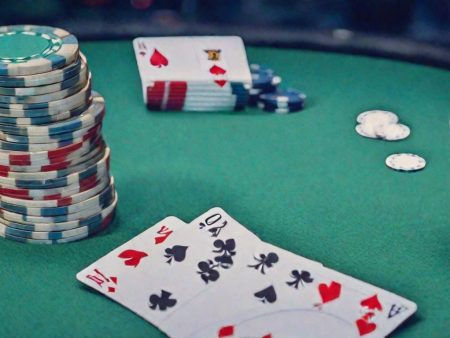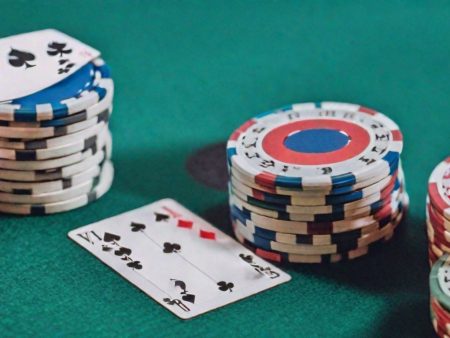In poker, the term “downswing” refers to a period when a player experiences a series of unfortunate outcomes and losses. This happens to every player, regardless of their skill level or experience. It’s important to understand that a downswing is a natural part of the game, and every player will face it at some point. The key is not to lose hope or confidence when it occurs.
How to Recognize a Downswing?
A downswing happens when losses become a norm over a period of time. This can lead to frustration and even self-doubt. Emotional reactions are natural, but it’s essential not to let them affect your gameplay. Downswing is part of the journey, and there’s no need to panic when it happens.
To cope with a downswing, the most important aspects are proper bankroll management and the ability to stay calm. Experienced players advise never risking large sums of money and actively managing your emotional state. Thoughtful decision-making and financial discipline will help you minimize losses during such a period.
What to Know About a Downswing?
- Emotional Reactions: Losing streaks often trigger frustration, irritation, and even anger. These emotions can hinder your ability to make sound decisions at the poker table. It’s vital to stay composed and not allow your feelings to affect your game. Emotional control is not just important, it’s essential for success.
- Financial Consequences: During a downswing, your bankroll can shrink significantly. This highlights the importance of proper money management. Using bonuses on online platforms that offer generous deposit bonuses can help restore your bankroll if you’re playing on such sites.
- Game Analysis: It’s not only about staying calm, but also about actively analyzing your gameplay. Review every hand, reflect on any mistakes, and work on improving your strategy.
- Psychological Resilience: Overcoming a downswing is not as easy as it sounds. However, with strong psychological preparation and sound bankroll management, it is possible. If you feel like you’re losing confidence during your game, online casino bonuses can be a great way to boost your bankroll and get back on track.
Read also: Chip dumping – money laundering through poker rooms.
How to Survive a Downswing and Get Back on Track?
A downswing is an inevitable part of the poker game that every player faces. But with the right approach and strategic mindset, you can get through it successfully. Here are some tips that will help you weather the storm without significant financial losses.
- Control Your Emotions: Don’t let frustration or anger influence your decisions. Play calmly and avoid making emotionally-driven choices. Relaxation techniques like deep breathing or meditation can help keep your mind clear.
- Analyze Your Sessions: Don’t hesitate to review each session. Identify weak spots and work on improving them. Go over key moments where you could have made a better move and adjust your strategy accordingly.
- Manage Your Bankroll Carefully: Even during a downswing, avoid risking all your money. Set strict limits for each session to minimize risks. Play within your financial means to avoid significant losses.
- Talk to Other Players: Sharing your experiences with fellow players can be helpful in tough times. They may offer advice, support, or new solutions to problems. Online poker forums and communities can also be great resources for valuable insights and connections with like-minded individuals.
- Maintain Physical Health: Physical and emotional well-being are crucial in overcoming a downswing. Stay active, exercise regularly, and follow a healthy diet. This will help you remain physically and mentally prepared for the game.
- Take Breaks if Needed: If the downswing feels overwhelming, don’t hesitate to take a break from poker. Spend time with family and friends or engage in other activities. A break will allow you to return to the game with fresh energy and perspective.
A downswing is a natural and inevitable part of every poker player’s journey. Whether you’re a beginner or a seasoned pro, you’ll face this challenge. However, if you follow the advice above, you’ll not only get through tough times but also come out of it with improved skills and greater psychological resilience. Remember that success comes to those who adapt and don’t give up.
Read also: Big and small blinds in poker: what they are, charts for protection and rests.
And of course, if you want to continue your poker journey, look for online casinos with low deposit requirements. On our blog, you’ll find useful information about the best platforms and bonuses that will help you get back on track to victory. Don’t miss out on valuable insights about slot games! Visit the slot and gambling blog to explore mechanics, RTP, and winning strategies.
FAQ: Downswing in poker and how to deal with it
What is a downswing in poker?
A downswing in poker refers to a prolonged period of losing money, despite making good decisions or playing optimally.
It’s a common occurrence in poker due to the inherent variance and unpredictability of the game.
What causes downswings in poker?
Downswings can be caused by a combination of factors, including:
- Variance, or the natural ups and downs of the game.
- Poor decision-making or suboptimal play.
- External factors, such as stress or fatigue, affecting performance.
How does variance contribute to downswings?
Variance refers to the randomness in poker outcomes. Even when you play perfectly, bad luck can result in losses over the short term.
Over time, variance evens out, but downswings are inevitable in the short run.
What emotional impact can downswings have on players?
Downswings can lead to frustration, self-doubt, and even "tilt," where emotional reactions negatively impact decision-making.
These feelings can make it harder to focus and recover effectively.
What is ’tilt’ and how does it relate to downswings?
Tilt is an emotional state where frustration or anger causes a player to make irrational decisions.
During a downswing, players are more prone to tilt, which can worsen their results and prolong the losing streak.
How can players cope with a downswing in poker?
To cope with a downswing, players should:
- Stay focused on long-term goals and avoid overreacting to short-term losses.
- Analyze their gameplay to identify areas for improvement.
- Take breaks to reset mentally and emotionally.
- Stick to proper bankroll management to minimize the financial impact.
What is bankroll management, and why is it important during a downswing?
Bankroll management involves setting limits on how much money you risk in each game based on the size of your poker bankroll.
Proper bankroll management helps players survive downswings without going broke, ensuring they can continue playing and recover losses.
Can studying poker strategy help overcome downswings?
Yes, studying poker strategy can improve decision-making and reduce mistakes, which can help mitigate the effects of downswings.
Understanding advanced concepts and reviewing past hands can also boost confidence and performance.
Should players take breaks during a downswing?
Taking breaks during a downswing is often beneficial.
A pause allows players to clear their minds, regain perspective, and return to the game with a more focused and positive attitude.
How long do downswings typically last?
The duration of a downswing varies depending on factors like variance, game type, and a player’s skill level.
While some downswings last only a few sessions, others may persist for weeks or even months in extreme cases.
How can players maintain a positive mindset during a downswing?
To maintain a positive mindset, players can:
- Focus on the learning opportunities a downswing provides.
- Remind themselves of past successes and long-term profitability.
- Engage in activities outside of poker to maintain balance and reduce stress.
What role does experience play in handling downswings?
Experienced players are often better equipped to handle downswings because they understand the role of variance and have strategies to cope with emotional and financial challenges.
They also recognize that downswings are temporary and part of the game.






